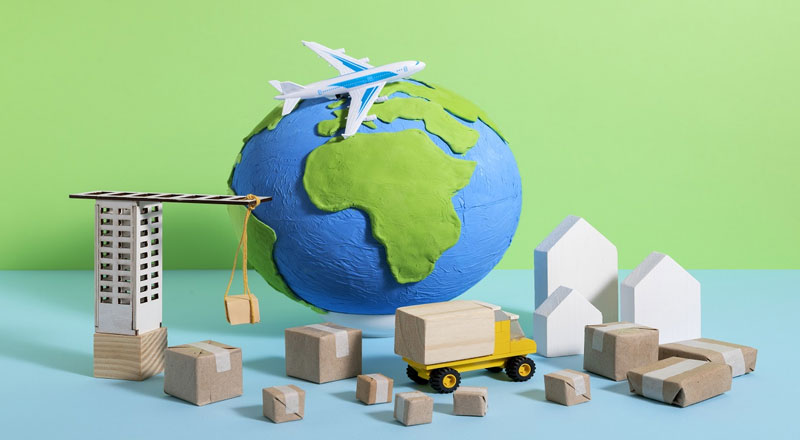Why a Robust E-Waste Policy Is Essential for India
India is at a crucial crossroads in its environmental journey. As one of the fastest-growing economies and the third-largest generator of electronic waste globally—after China and the United States—India faces a monumental challenge in managing its ever-increasing mountain of discarded electronics. The rise in consumer electronics consumption, driven by rapid urbanization, expanding middle-class demand, and digital penetration, has created a parallel explosion in e-waste.
Against this backdrop, the Indian government introduced a new e-waste management policy aimed at formalizing the sector, increasing recycling rates, and curbing hazardous disposal practices prevalent in the informal economy. By mandating pricing floors for recyclers, the policy is designed to incentivize scientific waste processing while holding manufacturers financially accountable for the post-consumer phase of their products.
However, what the government sees as a necessary regulatory intervention, global electronics giants see as an excessive cost burden. The ensuing conflict between industry stakeholders and the government has turned the e-waste policy into a litmus test for environmental governance, industrial compliance, and diplomatic resilience.
The Policy at the Heart of the Storm
In September 2024, the Indian government set a minimum price manufacturer must pay to recyclers for handling end-of-life electronics. The aim was simple: to encourage formal recycling practices and help recyclers build scientific capacity for safe waste processing. Under the new mandate, consumer electronics are to be recycled at a minimum of ₹22 per kg, while smartphones must fetch ₹34 per kg.
This pricing mechanism is intended to counter the dangerous cost-cutting methods often used by the informal sector—such as open burning and acid leaching—which are hazardous to both the environment and human health.
While this move has been welcomed by recyclers, it has rattled large multinational companies, particularly those with significant market presence and extensive product portfolios in India.
Multinational Backlash: From Legal Challenges to Lobbying
Several top electronics companies, including Japan’s Daikin and Hitachi, and India’s own Havells and Voltas, have filed lawsuits against Prime Minister Narendra Modi’s administration, seeking to overturn the pricing policy. Their arguments include claims of constitutional overreach, excessive compliance costs, and market destabilization.
Daikin went so far as to accuse the government of drafting a policy that “financially benefits” recyclers at the cost of manufacturers—an accusation the government has strongly refuted.
Meanwhile, Samsung and LG, though not part of the legal battle, have expressed serious concern. Samsung reportedly warned Indian officials that its recycling costs could jump 5 to 15 times under the new regime. LG’s recent IPO filing included a note acknowledging the financial strain imposed by the updated compliance rules.
The Consumer Electronics and Appliances Manufacturers Association (CEAMA), representing many of these companies, has urged the Environment Ministry to reconsider the pricing mechanism, citing a steep rise in compliance costs to the tune of 2% to 8% of overall production expenses.
Why the Government Is Holding Its Ground
The Indian Environment Ministry, however, has defended the policy vigorously. In court submissions, the ministry argued that leaving pricing entirely to market forces could lead to a “race to the bottom,” compromising environmentally sound waste disposal standards. It asserted its legal authority to regulate pricing in the interest of national environmental objectives and sustainable development.
The ministry’s stance is grounded in hard facts. Only 43% of India’s e-waste is currently recycled in the formal sector. The rest is handled by an informal network of scrap dealers, many of whom operate with little regard for environmental standards. With only 322 authorized recyclers across the country, India needs a strong framework to incentivize formal participation and improve recycling infrastructure.
The government also maintains that the pricing is reasonable. According to Nitin Gupta, CEO of Attero—one of India’s largest recyclers—the cost to recycle a washing machine is around $10 under the new rates. “If you want scientific recycling, you need funding and profits. This is good for the country and the environment,” he said.
The Ground Reality: Informal Sector Still Rules the Roost
Despite policy shifts, informal recyclers continue to dominate the sector. In Gujarat, for instance, 60-year-old Mustakeem Malik breaks down televisions and air conditioners in a makeshift workshop using rudimentary tools. He earns approximately ₹50,000 a month by selling dismantled components like copper and plastic. Malik says he has no interest in formal recycling. “That business has a lot of expenses. It’s for the big guys,” he admits.
This highlights a fundamental tension in India’s waste economy: while informal workers provide livelihood to thousands and operate with minimal overhead, they often work at the cost of long-term environmental degradation.
Balancing Sustainability with Economic Realities
India’s new e-waste pricing policy reflects an ambitious effort to bring systemic change to one of the country’s most neglected environmental challenges. The push to formalize recycling, enhance accountability, and build a sustainable waste management ecosystem is commendable—and long overdue.
However, the policy’s success will depend on finding common ground between environmental imperatives and industrial feasibility. While it is essential to hold corporations accountable for their environmental footprint, the government must also engage industry stakeholders in a constructive dialogue to fine-tune the policy where needed.
Rather than viewing the pricing mandate as a battlefront, it should be seen as an opportunity—for innovation, for building domestic recycling capacity, and for transitioning India into a global leader in sustainable manufacturing. The challenge now lies not just in enforcing the policy, but in making it economically viable and socially inclusive.
India’s e-waste dilemma is not just about trash—it is about the future we choose to build. And the path to that future must be paved with both responsibility and resilience.
(With agency inputs)





